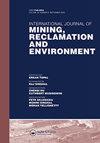Sustainable mining of critical minerals and metals around the world: bottlenecks and opportunities
IF 2.7
3区 工程技术
Q3 ENVIRONMENTAL SCIENCES
International Journal of Mining Reclamation and Environment
Pub Date : 2022-10-21
DOI:10.1080/17480930.2022.2143790
引用次数: 0
Abstract
Production of critical minerals has grown enormously over the past decade with no sign of slowing down. On the contrary, as the demand for renewable energy continues to grow, so does the demand for critical raw materials essential for clean energy technologies. Nevertheless, their supply may be at risk due to geological scarcity, geopolitical issues, trade policies, environmental and social impacts, and other factors that affect different parts of the world to varying degrees. The questions arising are many: Is mining critical minerals and metals sustainable? If not, how can we make it sustainable? Many techniques for creating sustainable critical minerals and metals supply still need to be invented. We need to bridge the gap between disciplines and create new synergies to secure a sustainable future supply of these commodities, now more than ever, as demand surges. Hence, a collection of papers was summoned in this special issue to investigate sustainability in mining critical commodities worldwide. The opportunities and challenges facing the feasible supply of several raw materials are discussed, and strategic approaches are proposed for the upcoming global energy transition. The first paper, Critical minerals for green energy transition: A United States perspective, by David Hammond and Thomas Brady [1], examines the green energy transition objectives in the U.S. from a sceptical perspective. The U.S. mining industry seems to be in the shadow of its intimate past, and the ambitious decarbonisation targets announced by politicians and climate stakeholders are doubted by many. The authors present a detailed review of the domestic mining industry while mentioning the main bottlenecks that govern the sector and block the provision of critical raw materials. The second paper, The long uphill journey of Australia’s rare earth element industry: challenges and opportunities, by George Barakos, Laurence Dyer and Michael Hitch [2], focuses on the feasible production of rare earth elements (REE) in Australia and discusses the progress of the domestic REE industry through the significant challenges that jeopardise the viability of the sector. The authors are using SWOT and Risk Analyses to identify the strengths and weaknesses of the Australian rare earth industry, and determine potential opportunities and threats, given the considerable investments to be made in the country to construct two new REE processing plants. The third paper, EU – Africa Strategic Corridors and critical raw materials: two-way approach to regional development and security of supply, by Claudia Branzelli, Gian Andrea Blengini, Sergio Oliete Josa and Carlo Lavalle [3], deals with the situation in Europe and its multi-layered governance structure combined with its push for securing the supply of critical raw materials. In the context of Europe’s strategy to find intercontinental partners, the authors draw a number of EUAfrica strategic corridors that will use mineral resources as a catalyst to create and strengthen value chains and territorial organisation among partners. The scope of the paper is to understand how世界各地关键矿物和金属的可持续开采:瓶颈和机遇
关键矿物的产量在过去十年中大幅增长,没有放缓的迹象。相反,随着对可再生能源的需求持续增长,对清洁能源技术所必需的关键原材料的需求也在增长。然而,由于地质稀缺、地缘政治问题、贸易政策、环境和社会影响以及其他不同程度影响世界不同地区的因素,它们的供应可能面临风险。出现的问题有很多:开采关键矿产和金属是否可持续?如果没有,我们如何使其可持续发展?许多创造可持续关键矿产和金属供应的技术仍需发明。随着需求激增,我们现在比以往任何时候都更需要弥合学科之间的差距,创造新的协同效应,以确保这些商品的可持续未来供应。因此,本期特刊汇集了一系列论文,以调查世界各地采矿关键商品的可持续性。讨论了几种原材料的可行供应所面临的机遇和挑战,并为即将到来的全球能源转型提出了战略方针。David Hammond和Thomas Brady[1]的第一篇论文《绿色能源转型的关键矿物:美国视角》从怀疑的角度审视了美国的绿色能源转型目标。美国采矿业似乎正处于其亲密过去的阴影中,政治家和气候利益相关者宣布的雄心勃勃的脱碳目标受到了许多人的怀疑。作者对国内采矿业进行了详细的回顾,同时提到了制约该行业和阻碍关键原材料供应的主要瓶颈。George Barakos、Laurence Dyer和Michael Hitch[2]的第二篇论文《澳大利亚稀土元素行业的漫长上坡路:挑战与机遇》,重点关注了澳大利亚稀土元素(REE)的可行生产,并讨论了国内稀土元素行业在面临危及该行业生存能力的重大挑战时取得的进展。鉴于在该国建设两个新的稀土加工厂需要进行大量投资,作者正在使用SWOT和风险分析来确定澳大利亚稀土行业的优势和劣势,并确定潜在的机遇和威胁。Claudia Branzelli、Gian Andrea Blengini、Sergio Oliete Josa和Carlo Lavalle[3]的第三篇论文《欧盟-非洲战略走廊和关键原材料:区域发展和供应安全的双向方法》探讨了欧洲的形势及其多层治理结构,并结合其对确保关键原材料供应的推动。在欧洲寻找洲际合作伙伴的战略背景下,作者绘制了一些欧盟-非洲战略走廊,这些走廊将利用矿产资源作为催化剂,在合作伙伴之间创建和加强价值链和领土组织。本文的范围是了解
本文章由计算机程序翻译,如有差异,请以英文原文为准。
求助全文
约1分钟内获得全文
求助全文
来源期刊

International Journal of Mining Reclamation and Environment
ENVIRONMENTAL SCIENCES-MINING & MINERAL PROCESSING
CiteScore
5.70
自引率
8.30%
发文量
30
审稿时长
>12 weeks
期刊介绍:
The International Journal of Mining, Reclamation and Environment published research on mining and environmental technology engineering relating to metalliferous deposits, coal, oil sands, and industrial minerals.
We welcome environmental mining research papers that explore:
-Mining environmental impact assessment and permitting-
Mining and processing technologies-
Mining waste management and waste minimization practices in mining-
Mine site closure-
Mining decommissioning and reclamation-
Acid mine drainage.
The International Journal of Mining, Reclamation and Environment welcomes mining research papers that explore:
-Design of surface and underground mines (economics, geotechnical, production scheduling, ventilation)-
Mine planning and optimization-
Mining geostatics-
Mine drilling and blasting technologies-
Mining material handling systems-
Mine equipment
 求助内容:
求助内容: 应助结果提醒方式:
应助结果提醒方式:


